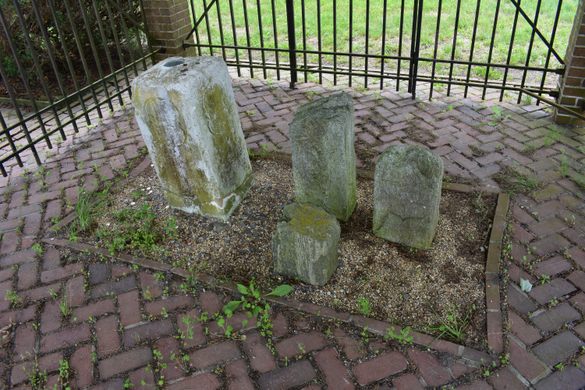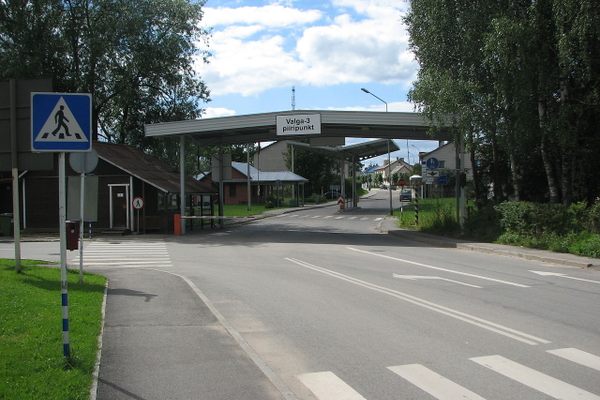Transpeninsular Midpoint Marker
The stone marker that Mason and Dixon placed at the eastern end of the famous north-south border they surveyed.
Granting charters to form colonies in Colonial America was an unorganized, hodgepodge affair, and sometimes the same property was accidentally bequeathed to multiple parties. That’s exactly what happened on the Maryland-Pennsylvania border, where Lord Baltimore and William Penn both received claims to colonies that overlapped a considerable amount.
Initially, however, the vagary of the borders was largely ignored. It wasn’t until they began to significantly affect the collecting of taxes from settlers that the aristocracy of the colonies took an interest. Maryland’s charter predated Pennsylvania’s by several decades but it was poorly surveyed, having been based on earlier, more inaccurate maps. Also, according to Maryland’s charter, the land that ended up becoming the city of Philadelphia fell within Maryland borders, which was obviously unacceptable to the Pennsylvania colony. An additional wrinkle—Delaware was being administered by Pennsylvania but Maryland claimed that land was granted to them by their charter.
The English courts largely settled the issue in Pennsylvania’s favor. It was decreed that the border between Maryland and Pennsylvania would be resurveyed to an east-west line at a point 15 miles south of Philadelphia, and Delaware was formally ruled to not be a part of Maryland’s charter. After more decades of legal wrangling, and several improved but still flawed surveys of the border, the colonies mutually decided to hire professionals from England to sail over and do a proper job. To this end, astronomer Charles Mason and surveyor Jeremiah Dixon were hired on July 20th, 1763 and paid £3,512, or approximately $840,000 in 2017, adjusted for inflation.
Over the following four years, Mason and Dixon walked every inch of the border, leaving a stone marker at each mile along the way. The southernmost point of the Maryland-Delaware border, where it nearly makes a right angle and forms the southwest corner of Delaware, was known as the Transpeninsular Midpoint. It marks the eastern end of what became known as the Mason-Dixon line, the informal boundary delineating the North from the South in the United States.
In 1769, after nearly nine decades of dispute, the borders between the colonies was approved by King George III and finally settled. Only seven years later, however, the Calvert and Penn families lost their colonies due to the American Revolution when the American colonies declared their independence from England.
Today, you can still see the stone marker that Mason and Dixon placed to mark one end of the famous borders that they surveyed, under a small shelter on the side of the highway, adjacent to other stones marking earlier attempts at the border.
Know Before You Go
The survey stones are on the side of the highway where route 54 crosses the Maryland-Delaware border. There is a small pull-off where you can park.
Community Contributors
Added by
Edited by
Plan Your Trip
The Atlas Obscura Podcast is Back!






















Follow us on Twitter to get the latest on the world's hidden wonders.
Like us on Facebook to get the latest on the world's hidden wonders.
Follow us on Twitter Like us on Facebook